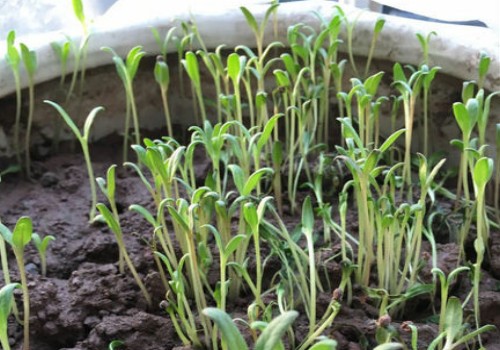To understand these ways to prevent diseases, what to do after the seeds of the sky star sprout?
The cultivation of Gypsophila paniculata seedlings is a troublesome thing. After all, the process of sowing and breeding is time-consuming and laborious, and a little carelessness will cause poor growth of seedlings. Therefore, the general potted plant friends like to go to the flower market to buy or buy ready-made seedlings back to transplant the pot. This can save a lot of inconvenience in cultivating seedlings, saving time and worry.

If we adopt sowing and breeding baby shoots of Gypsophila paniculata, not only the sowing method should be correct, but also the maintenance and management work after seed germination must be paid attention to. Because there is a little carelessness, Gypsophila paniculata on the tender seedlings will appear excessive growth phenomenon. After the seedlings grow excessively, not only the stems grow tall and thin, which is easy to lodge, but also it is not conducive to germination and branching, and it is difficult to cultivate potted seedlings with good plant type. So, what do you do when the seeds of Gypsophila are sprouted?
Gypsophila paniculata seeds are prone to excessive growth after germination. The original reason is mainly due to too much water and fertilizer, but at the same time the environment is relatively shaded and caused by lack of light. Therefore, in order to solve and avoid the situation of excessive growth of baby stars, we first need to create a good growth environment for them, requiring smooth ventilation, bright sunlight, appropriate humidity in the basin soil, and avoiding too much water and making the basin soil too wet or stagnant.
One of the most important things to pay attention to is to provide sufficient light, because Gypsophila paniculata is very fond of light, and it is necessary to gradually provide scattered light for budding, and gradually provide direct light as the seedlings continue to grow. But at the same time also need to pay attention to, after all, the young plant of all sky star is very young, the stem is also relatively long, so the light intensity must be controlled well, do not put it in the sun at once, otherwise easy to sunburn young plant.
At the same time, water and fertilizer management should also be scientific and reasonable. Although Gypsophila paniculata prefers a fertile, moist environment, excess fertilizer and water can also cause excessive growth. Seedling watering is generally more scientific in the form of spraying, avoiding too much water supply; fertilization, you can spray a little nutrient solution appropriately, do not recommend direct root irrigation, as far as possible to achieve "thin fertilizer and frequent application". This can also inhibit or prevent the occurrence of excessive growth of Gypsophila paniculata to a certain extent.
Then, when the seedlings grow to about 5 cm high, we can remove the core. Don't worry about affecting the growth of seedlings. In fact, this is also an effective means to prevent excessive growth from lodging. Moreover, the flowers of Gypsophila paniculata are usually open on the branches. We need to pick or top them frequently to promote more branches of the plant germination, so that not only the plant type is fuller, but also the number of flowers is more.
- Prev

Disease Prevention of how to prune and cultivate Golden Thousand Flowers
Ten thousand taels of gold, as a kind of New year's Eve flower, has a beautiful meaning of auspiciousness and wealth, and can bring a lot of joyous feelings to the festival. Of course, in addition to being suitable for display during the Spring Festival, it is also widely used in weddings, opening, housewarming and many other occasions. And even if you put it
- Next

To understand these ways to prevent diseases, what to do after the germination of the seeds of Gypsophila paniculata
The cultivation of Gypsophila paniculata seedlings is a troublesome thing. After all, the process of sowing and breeding is time-consuming and laborious, and a little carelessness will cause poor growth of seedlings. Therefore, the pot friends who generally plant Gypsophila paniculata like to go
Related
- Fuxing push coffee new agricultural production and marketing class: lack of small-scale processing plants
- Jujube rice field leisure farm deep ploughing Yilan for five years to create a space for organic food and play
- Nongyu Farm-A trial of organic papaya for brave women with advanced technology
- Four points for attention in the prevention and control of diseases and insect pests of edible fungi
- How to add nutrient solution to Edible Fungi
- Is there any good way to control edible fungus mites?
- Open Inoculation Technology of Edible Fungi
- Is there any clever way to use fertilizer for edible fungus in winter?
- What agents are used to kill the pathogens of edible fungi in the mushroom shed?
- Rapid drying of Edible Fungi

